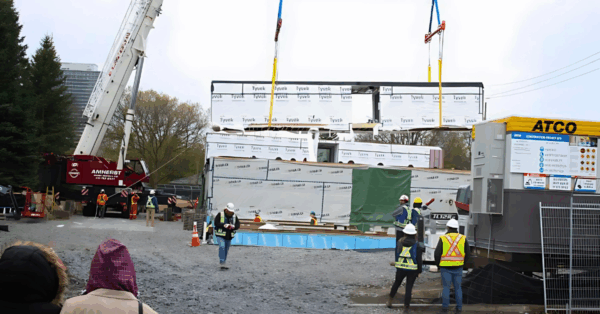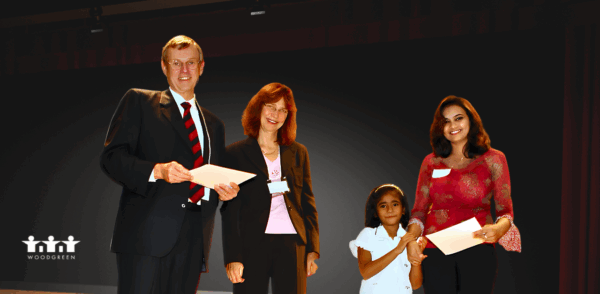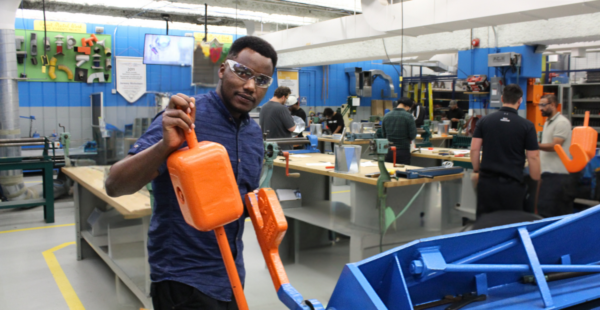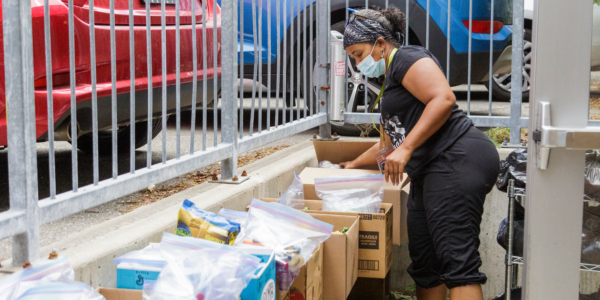Throughout WoodGreen’s 85-year history, the organization has adapted to evolving neighbourhood and community needs. Anne Babcock, WoodGreen’s President and CEO, shares her reflections on WoodGreen’s approach to community support, innovation, and collaboration, and what’s on the horizon.
What has been your history with WoodGreen?
I’ve spent basically my whole career at WoodGreen; I started as a frontline adult program worker. We provided all sorts of programming, for example, women's groups and social clubs; we even ran a pub night for the neighbourhood with local musicians. The physical WoodGreen building had a living room feel; people could come and hang out. However, we noticed several people coming in with mental health concerns. And so, I applied for and got the funding for our first mental health worker and our first mental health community program. I also helped write the first proposal for a housing building. As needs arose, we worked with community members and other partners and gradually evolved our programs.
Can you speak to the growth and development of WoodGreen's mission from the "living room of the community" to now?
The neighbourhood has changed, and WoodGreen has changed too. We were physically located in one neighbourhood, and we had a couple of other locations, but we realized there was more to do. And so that's when we evolved; we started to build out those different focus areas, wherever the need was.
And now, we've been working to make sure that there is an integration of the social determinants of health like housing, mental health, employment, and child care. We all play a key part in creating solutions.
What are the guiding principles WoodGreen applies when approaching social issues?
The driving vision is a Toronto where everybody has the opportunity to thrive. When we look at community challenges, we need to think, what are the underlying social issues and who else is doing something to address that in Toronto, or across the world? And in some cases, who can we partner with? Who can we bring together to create a solution to an existing problem? It’s critical that we aren’t duplicating services, that we are efficiently using the resources we have. The outcome that we are seeking to achieve has to be clear.
What would you say you're most proud of over your career at WoodGreen?
One of them is the Homeward Bound program. Through research and partnerships, we came up with a model to address all of the issues that single, under-housed mothers were facing. We worked with the city, the province, and private philanthropy. And together, we created this integrated model of services. It launched in 2004, and now it's helped hundreds of mothers and families. Since then, we’ve continued to utilize that co-design process for youth programming, seniors and caregiver programs, and even the design of physical spaces.
What would you say are some priorities on the horizon for WoodGreen?
Right now, we have about 1000 units of housing; we want to get to 3000 units because having stable, adequate and affordable housing is the basis of helping somebody move forward.
We’re also building out a youth vision for the city and for WoodGreen. We’ve provided youth programming for years, and we know there are lots of youth programs. They’re all focused on particular issues, such as homelessness, mental health, and education. We are trying to incorporate everything youth need to make them successful, healthy, and active community members.
We are continuing to look at the future of work. COVID has significantly changed how people work and what's essential in the workplace. Looking at how technology will change and continue to change, what does work look like?
Finally, creating that integrated health model keeps our communities healthy through seamless wraparound services.
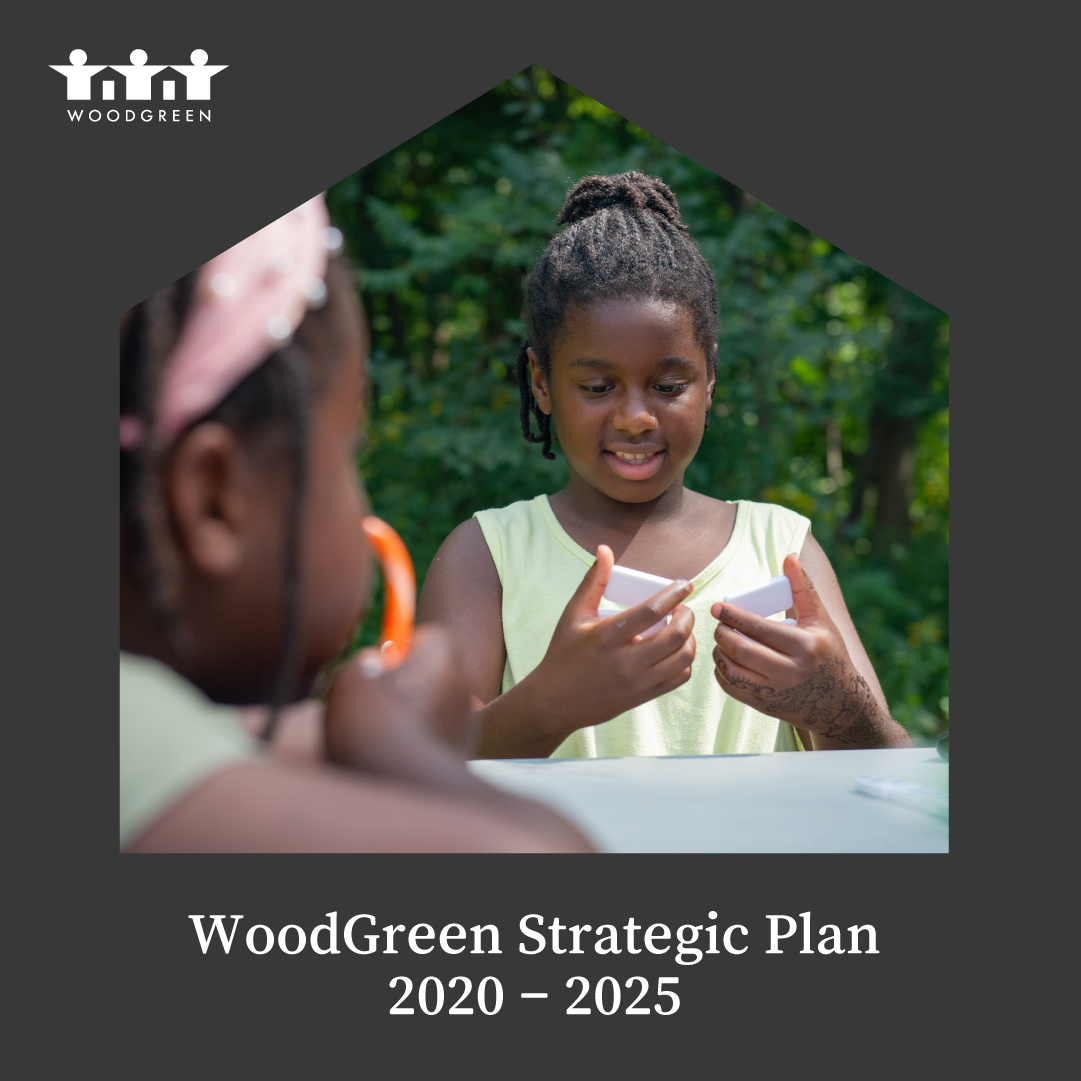 Learn more about WoodGreen’s current plans in the 2020-2025 Strategic Plan.
Learn more about WoodGreen’s current plans in the 2020-2025 Strategic Plan.
Finally, pretend it's the year 2107; it's another 85 years in the future. What is your hope for the organization at our 170th Anniversary?
I hope we’re continuing to create the services and programs that people need to make their lives better. And that we’re at the forefront of delivering the services that people need. That means affordable, supportive, and accessible housing for everybody. That means the evolution of childcare and new educational approaches for young children. That means integrated models of care for all communities. Overall, I hope WoodGreen can be a place where anybody can find whatever support they need when they need it.
